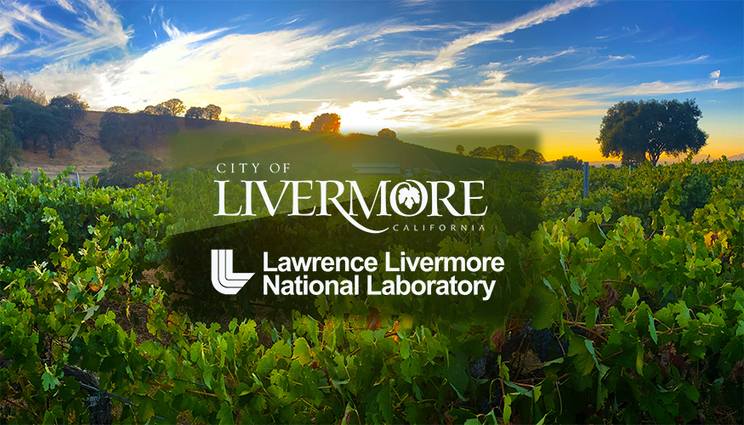LLNL partners with city of Livermore to reduce carbon emissions
 (Download Image)
(Download Image)
Lawrence Livermore National Laboratory has signed a memorandum of understanding with the City of Livermore to collaborate on advancing climate action in Livermore and build community-wide resilience to climate change impacts.
Lawrence Livermore National Laboratory (LLNL) has signed a memorandum of understanding (MOU) with the city of Livermore to collaborate on advancing climate action in Livermore and build community-wide resilience to climate change impacts.
The city’s Climate Action Plan (CAP), anticipated to be adopted by the Livermore City Council this summer, will create a roadmap to achieve carbon neutrality (also known as net-zero emissions) by 2045. The CAP also will include adaptation and resiliency strategies to prepare Livermore for a changing climate.
The city is developing strategies to be consistent with state climate mitigation targets (Senate Bill 32 and Executive Order B-55-18) and new legislation that requires cities to plan for the impacts of climate change (Senate Bill 379). Executive order B-55-18 mandates that the state achieve carbon neutrality by 2045 and maintain net-negative emissions thereafter. Achieving this goal would complete a chain of other ambitious statewide targets for reducing greenhouse gas emissions.
In 2020, LLNL published the pivotal report "Getting to Neutral: Options for Negative Carbon Emissions in California," which outlines a comprehensive suite of strategies and technologies to help California become carbon-neutral — and ultimately carbon-negative — by 2045. The report was funded by the Livermore Lab Foundation (LLF) with grant support from the ClimateWorks Foundation.
“The opportunity to apply these initiatives right here at home is really important to us,” LLNL Director Kim Budil said. “We’re pleased to partner with our local community on projects that will help them adapt and become resilient when it comes to climate change.”
The goal of the MOU is to present opportunities for collaboration toward advancing climate action in the community of Livermore and beyond. Last year, city officials met with LLNL representatives to discuss cooperating to demonstrate climate technologies at various sites and explore other potential collaborations and funding sources.
“LLNL’s inclusive approach makes us a go-to resource for carbon neutrality,” said Roger Aines, LLNL’s Energy Program chief scientist. “We’re happy to collaborate with our neighbors in the city of Livermore on a cleaner atmosphere and friendlier climate.”
LLNL researchers proposed three climate technologies that could be demonstrated at several locations within the city. The first, biogas utilization, focuses on carbon removal from biomass and could be piloted at the sewage plant on the north side of Livermore. The second technology, known as “carbon farming,” functions by increasing decomposing plant material and microbes in soil; in urbanized areas like Livermore, improving the soil in this way can improve carbon uptake. Finally, creating localized, autonomous power microgrids can help assure electricity remains online during wider outages.
“We are very grateful to LLNL for collaborating with the city to use innovative approaches in reaching carbon neutrality,” said Livermore City Manager Marc Roberts. “The city is committed to protecting the health and well-being of the Livermore community and with LLNL as a partner, we are confident we will reach our targets and become a model for other cities to follow.”
Contact
 Anne M. Stark
Anne M. Stark
[email protected]
(925) 422-9799
Related Links
City of Livermore"Getting to Neutral: Options for Negative Carbon Emissions in California"
Livermore Lab Foundation
ClimateWorks Foundation
Tags
Earth and Atmospheric SciencePhysical and Life Sciences
Community Outreach
Atmospheric, Earth, and Energy
Science
Featured Articles







